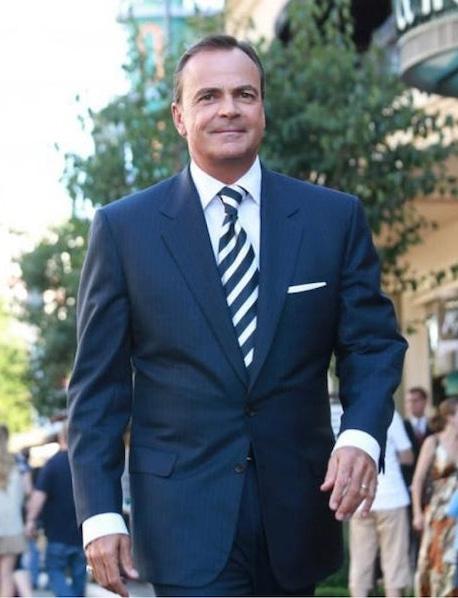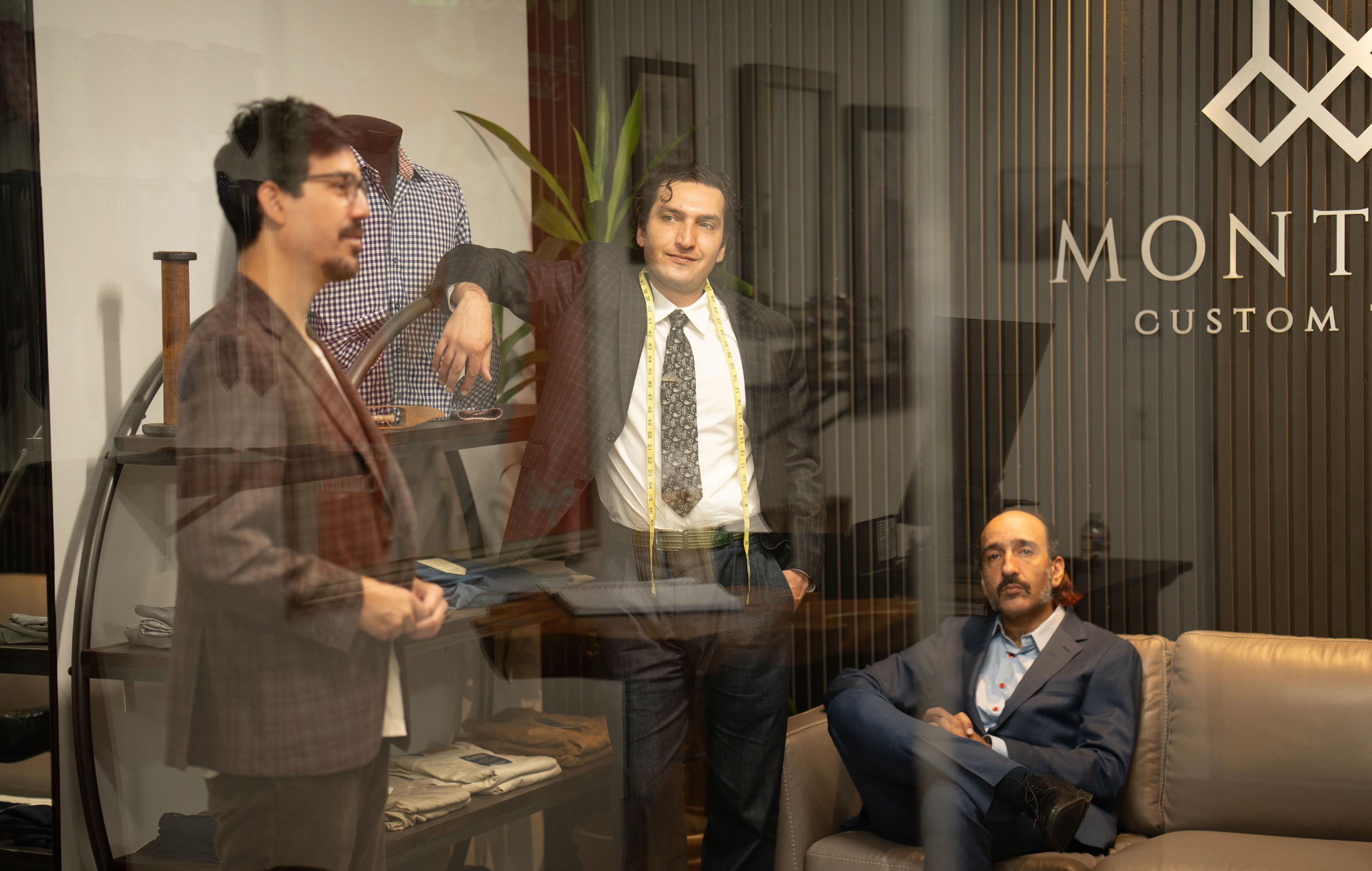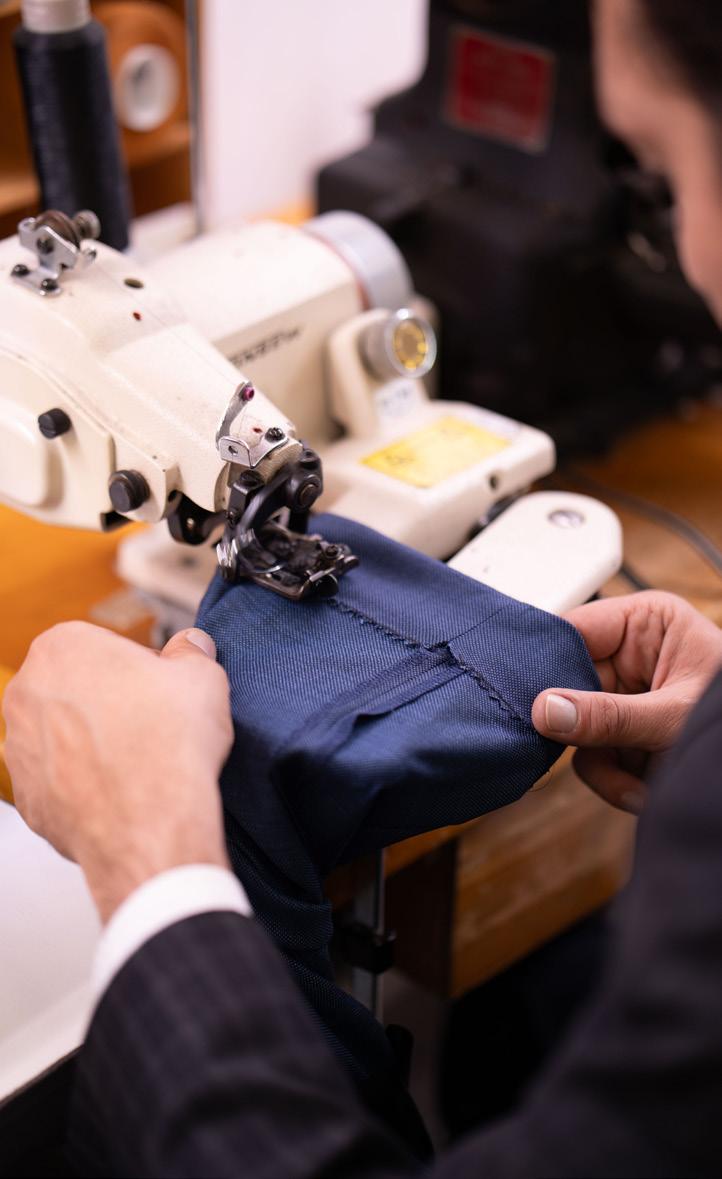
Judge to L.A. Leaders: ‘I Am Your Worst Nightmare’ in Scathing Homeless Spending Rebuke
See Page 4



Judge to L.A. Leaders: ‘I Am Your Worst Nightmare’ in Scathing Homeless Spending Rebuke
See Page 4

The LACOE feasibility study stems from a 2017 petition by the City of Malibu to form its own school district from SMMUSD territory
A newly released feasibility study has determined that a proposal to establish a standalone Malibu Unified School District does not meet eight of nine California state criteria required for independence, according to a detailed report from the Los Angeles County Office of Education Division of Business Advisory Services.
The study, which stems from a 2017 petition by the City of Malibu to form its own school district from SMMUSD territory, warns that separating Malibu from the Santa Monica-Malibu Unified
School District would have a significant negative fiscal impact on the remaining Santa Monica USD.
The report will be discussed at a County Committee meeting on April 2 at 9:30 a.m., either in person or via Zoom.
The LACOE study analyzes the nine state-mandated conditions, finding that the proposed Malibu USD would not maintain the required 1,501-student minimum, with current enrollment at 1,063, per LACOE’s Average Daily Attendance data. It notes Malibu’s 70-year history within SMMUSD undermines claims of a separate identity, and unresolved financial divisions raise solvency concerns, according to the SSC analysis in the LACOE report. The study also warns of ethnic shifts, increased state costs, program disruptions, and rising facilities expenses, while fiscal management would suffer, particularly for Santa Monica USD, as detailed in the LACOE and SSC findings. The only condition met is that the proposal isn’t primarily about property values, though values might rise, the LACOE report states.
The only condition met, per the LACOE report, is that the proposal is not primarily

designed to increase property values.
While Malibu’s already high property values might rise further, the study finds no evidence that this is the driving motive behind the City of Malibu’s petition.
The SMMUSD Board of Education, as stated in their announcement, has consistently opposed the 2017 petition, aligning with the LACOE findings.
“This report mirrors concerns repeatedly expressed by the SMMUSD Board,” the email notes, emphasizing years of mediation to find a fair solution. Jon Kean, a board member, underscored this
effort in the announcement, saying, “We have worked diligently for years toward a fair, equitable and viable solution to unification.” He added that the board plans to discuss three mediated agreements on April 23, 2025, urging collaboration over conflict, according to the SMMUSD email.
LACOE staff recommends that the County Committee deny the petition on April 2, as outlined in the feasibility study. If denied, Malibu or other parties could appeal to the SBE; if approved, SBE review would still be required, the LACOE report explains.
The contamination is linked to storm runoff carrying toxic debris from burned structures and scorched land in the Palisades, Topanga, and Malibu
Marine life in Santa Monica Bay faces significant risks from heavy metals that leached into the water following January’s Palisades wildfires, according to new water-quality testing results released by environmental nonprofit Heal the Bay.
Testing conducted at 10 sites across the bay found elevated levels of beryllium, copper, chromium, nickel, lead, silver, arsenic, and zinc, among other contaminants. Heal the Bay scientists warn that these metals, even in low concentrations, can disrupt
biological processes, damage cells, and harm reproductive and immune functions in marine species. Additionally, pollutants can accumulate through the food chain, posing potential risks to humans who consume contaminated seafood.
While initial fears of immediate human health risks from runoff pollution were eased by the findings, Heal the Bay remains cautious. “We cannot definitively say that the water is safe until we have additional data and risk-thresholds for recreational contact,” the organization stated.
The contamination is linked to storm runoff carrying toxic debris from burned structures and scorched land in the Palisades, Topanga, and Malibu. Waves lapping against fire-damaged buildings along Pacific Coast Highway continue to introduce harmful metals into the ocean.
Heal the Bay is urging authorities to accelerate the removal of fire-related debris along the shoreline. Delays have persisted, with 45 homeowners opting out of federal cleanup programs and nearly 100 failing to respond. “Every day that hazardous debris remains along the coast, more harmful contaminants flow into the sea,” said Tracy

Quinn, Heal the Bay’s president and CEO. Areas showing the highest levels of contamination include Topanga Beach, Malibu’s Big Rock section, and Will Rogers State Beach. However, Santa Monica Pier and Dockweiler State Beach also showed increased heavy metal levels, indicating a need for further investigation
into contaminant movement offshore. Though current conditions remain uncertain, Heal the Bay recommends that beachgoers avoid fire-impacted areas, including those south of Montana Avenue in Santa Monica, until more comprehensive testing is completed.
The City of Santa Monica has officially launched a nationwide search for its next city manager, posting the position publicly with a salary of $410,604, according to job listings.
The new city manager will be tasked with overseeing Santa Monica’s approximately $765 million budget and managing an executive leadership team that includes an assistant city manager, a deputy city manager, and 11 department directors, according to the job postings.
The recruitment process follows the
announcement of current City Manager David White’s planned departure in February 2025. White, who has served in the role since October 2021, announced his resignation in December, stating he would return to Berkeley to take on the role of deputy city manager..
In the interim, former Assistant City Manager Elaine Polachek was appointed by the City Council to serve in the role while the search for a permanent replacement continues. Polachek, who previously served the city in various capacities for nearly two decades, officially stepped into the position in February.
According to the job listing, the selection process will include a virtual interview round on May 3, followed by in-person interviews on May 15. Interested candidates have until April 17 to apply.


The Santa Monica Police Department is stepping up enforcement efforts throughout April to crack down on distracted driving. As part of National Distracted Driving Awareness Month, the department urges motorists to keep their eyes on the road and their hands on the wheel.
Officers will be on heightened alert
for drivers violating California’s handsfree cell phone law. This law prohibits holding or using electronic devices while behind the wheel—even when stopped at a red light. Repeat offenders may face increased penalties, including points on their driving record.
“Staying focused behind the wheel is something we can all do,” the department said in a statement. “Distracted driving is not only risky — it is deadly.”
The enforcement push comes amid growing concerns over the dangers of distracted driving. According to the 2024 California Statewide Public Opinion Survey, 74% of respondents cited texting while driving as their top traffic safety concern. In 2022, 148 people were killed in crashes involving
distracted drivers across the state. Authorities believe the actual number is likely higher, as a distraction is often difficult to confirm after a collision.
Common distractions while driving include texting, eating, adjusting the radio, and using apps. Officers are reminding drivers that even a brief lapse in attention can have devastating consequences.
To promote safer driving habits, the department is encouraging motorists to follow a few key steps:
• Silence notifications and keep phones out of reach.
• Program GPS and adjust settings before starting the car.
• Avoid eating, grooming, or multitasking while driving.
• Set an example for others, especially teen drivers.
• Speak up as a passenger if the driver becomes distracted.
• Pull over to a safe location if urgent matters arise.
Funding for the initiative is provided by a grant from the California Office of Traffic Safety, through the National Highway Traffic Safety Administration.























U.S. District Judge David O. Carter, famous for his rulings against the West Los Angeles VA and UCLA in favor of veterans, on Thursday sharply criticized Los Angeles city and county officials over long-standing failures to properly track and manage billions of dollars in homeless services funding. He called the system broken and urged immediate reforms to ensure accountability.
The judge, who was out of patience, said, “We pay your bills. Figure this out.” to a group that included Mayor Karen Bass, City Council President Marqueece Harris-Dawson, L.A. County Board of Supervisors Chair Kathryn Barger and City Controller Kenneth Mejia. Carter added, “I am your worst nightmare. I can make your lives miserable.”
The rebuke came during a hearing convened by Judge Carter following the release of a scathing independent audit that found the Los Angeles Homeless Services Authority (LAHSA) lacked adequate data systems and financial oversight despite handling more than $2.5 billion in public funds aimed at addressing the region’s homelessness crisis.
“Nobody is asking our providers what they did or what services they performed,” Carter said. “We may have providers who committed fraud, and we may never know. We may also have providers who did excellent work, and we’ll never know that either.”
Judge Carter questioned why city officials had not pursued legal action against underperforming or potentially fraudulent service providers. “If we’re so short on money, why aren’t these providers being sued? Are they waiting for us to get senile or die?” he asked.
While the judge stopped short of imposing a court-appointed receiver to oversee the city’s homeless response — citing the city’s fragile financial condition — he strongly criticized the lack of transparency and oversight, particularly at LAHSA, which has been the subject of multiple audits since 2007 highlighting similar failings.
“This is a slow train wreck,” Carter said, noting that the situation has persisted across multiple administrations and oversight efforts.
Mayor Karen Bass, L.A. County Supervisor Kathryn Barger, and

representatives from LAHSA attended the hearing and raised concerns about the audit’s methodology and said it failed to offer clear recommendations for resolving the issues.
“I felt there was a lack of understanding of how they came to some of the conclusions,” said Barger, chair of the L.A. County Board of Supervisors.
Mayor Bass echoed the need for systemic change, emphasizing that addressing homelessness goes beyond housing alone.
“Of course, people need to be housed, but that’s not enough,” Bass said. “There needs to be comprehensive services, and those services need to be based on outcomes — how well did that person do?”
Bass, however, rejected Carter’s suggestion that she allow L.A. City Controller Kenneth Mejia to conduct a performance audit of her signature Inside Safe homelessness initiative. City attorneys argued that the city charter requires the mayor’s consent for such an audit — a position disputed by Mejia and the coauthor of the charter language.
Attorney Matthew Umhofer, representing the LA Alliance for Human Rights — the group that initiated the legal case against the city and county — urged the court to consider appointing a receiver with budgetary control, comparing the current crisis to the one that led to federal oversight of California’s prison healthcare system.
“The judge’s patience has worn thin. Our patience has worn thin,” Umhofer said. “If the city and county aren’t going to act, the court must.”
Despite resistance from city leadership,
Carter ordered Bass to coordinate directly with the controller to find a way forward on oversight. Whether that audit will proceed remains uncertain.
Carter concluded the hearing by underscoring the urgency of the moment. “Folks, you’ve got to solve this — or else the court is going to step in.”






Caruso recently told a local outlet that bringing life back to the village is essential
Palisades Village remains closed in the wake of January’s wildfires, but owner Rick Caruso has plans to reopen.
“We need to wait until the area is safe, roads are clear, and everything is refreshed,” Caruso recently told local news outlet ABC7. “The plan is to be ready by the beginning of next year.”
The upscale retail hub was largely unscathed by the disaster, thanks in part to private fire crews and water tenders

Immerse yourself in a sanctuary where nature’s tranquility meets the vibrancy of city life. Urban Jungle is more than a plant store it’s a communitycentered oasis bringing a lush slice of paradise to your urban lifestyle. Here, we passionately believe in the power of plants to transform spaces and elevate well-being.



brought in by Caruso’s company. However, surrounding neighborhoods were decimated, making reopening a complex process.
While the timeline may seem ambitious given the extent of the destruction, Caruso told the local outlet that bringing life back to the village is essential for the community’s recovery.
Palisades Village, which opened in 2018 using fire-resistant materials, served as an independent operation during the blaze, even loaning equipment to the Los Angeles Fire Department. Some tenants may not return, but Caruso expects most businesses to reopen.
Data from Palisades Village as reported by ABC7 shows 35% of its regular customers lost homes, but 65% live outside the area.






Santa Monica Architects for a Responsible Tomorrow
In the aftermath of the devastating 2025 Los Angeles wildfires, homeowners face the daunting task of rebuilding their lives and homes from the ground up. Yet within this tragedy lies an unprecedented opportunity to reimagine residential construction in wildfire-prone areas. As climate change accelerates the frequency and intensity of wildfires across California, the rebuilding process provides a chance to incorporate cutting-edge materials that enhance both sustainability and fire resistance.
The construction industry accounts for nearly 40% of global CO2 emissions, making sustainable rebuilding not just a personal choice but an environmental necessity. As Governor Gavin Newsom aptly stated following the fires, “You can’t rebuild the same. We have to rebuild with science. We have to build with climate reality in mind.” This perspective underscores the dual benefits of sustainable, fire-resistant construction: protecting individual homes while contributing to broader climate resilience. Subsequently, residents of destroyed or damaged homes now have the opportunity to pioneer construction approaches that could serve as models for other fire-prone communities worldwide. By incorporating innovative materials that reduce environmental impact while enhancing fire protection, homeowners can create dwellings that are not just replacements but improvements on what stood before.
One emerging material is Mass timber, which is one of the most promising materials for sustainable, fire-resistant construction. Unlike conventional lumber, mass timber products like cross-laminated timber (CLT) are engineered for strength and fire resistance through multiple layers of wood bonded together under high pressure. What makes mass timber particularly remarkable is its environmental profile. These products store carbon throughout their lifecycle, making them valuable alternatives to conventional materials like concrete and steel with high embodied carbon. A cubic meter of CLT can sequester approximately one ton of carbon dioxide, effectively turning buildings into carbon sinks. From a fire-resistance standpoint, mass timber performs counterintuitively well.
That is, when exposed to fire, the outer layer of mass timber chars creating an insulating layer that protects the structural integrity of the inner wood. This char layer slows combustion and maintains structural capacity far longer than unprotected steel, which can warp and fail when exposed to extreme heat. Building codes now recognize this performance characteristic, allowing mass timber to be used in buildings up to 18 stories high. Several local architects
are already incorporating mass timber elements into their rebuilding designs, particularly for exposed ceiling beams and structural elements that add both warmth and character to contemporary homes.
In fact, the exterior envelope of a home represents the first line of defense against wildfire, and several innovative materials have proven their effectiveness during recent California fires. Fiber cement siding stands out as a particularly effective option. This material combines cement, sand, and cellulose fibers to create a durable, non-combustible surface that withstands extreme temperatures. Homes in Pacific Palisades that survived recent fires often featured this material, demonstrating its real-world effectiveness. Available in styles that mimic wood, stucco, or stone, fiber cement provides aesthetic flexibility without sacrificing protection. As for roofing, Class A fire-rated materials such as concrete or clay tiles, metal panels, or composite shingles offer essential protection. The roof represents one of the most vulnerable areas during a wildfire, as embers can travel miles ahead of the main fire front and ignite combustible roofing materials. Some homeowners whose homes were burned are exploring green roof systems with fire-resistant plant species that provide additional insulation while reducing stormwater runoff.
Then to accompany the cladding, dual and triple-pane tempered glass windows with metal-mesh screens represent another critical component of fire-resistant design. When combined with proper sealing techniques, these windows significantly reduce heat transfer during fires while improving everyday energy efficiency. Some homeowners are investing in automated exterior ember shutters that can deploy during fire events to provide additional protection.
Beyond mainstream options, several emerging materials offer promising combinations of sustainability and fire resistance for Los Angeles burn area rebuilding projects. For example, hempcrete presents an intriguing alternative to traditional concrete. Made from hemp fibers mixed with lime, this bio-composite material provides excellent insulation while resisting fire, mold, and pests. Its ability to regulate humidity and provide natural insulation makes it particularly well-suited for the Pacific Palisades and Altadena climates, while its carbon-sequestering properties enhance its environmental benefits. Then, surprisingly, myceliumbased insulation, derived from fungal root structures, offers lightweight, fire-resistant alternatives to conventional insulation materials. These renewable biological materials can be grown into specific forms using agricultural waste products as a substrate, minimizing environmental impact while providing excellent thermal and acoustic performance. Another plantbased sustainable harvest is from the bark
of cork oak trees without harming them. Cork provides natural fire resistance and durability for flooring and insulation applications. Its cellular structure creates tiny air pockets that enhance insulation performance while slowing flame spread. While sustainable, fire-resistant materials often present higher upfront costs compared to conventional options, their long-term financial benefits can offset initial investments. Studies indicate that homes built with sustainable materials typically reduce energy consumption by 30-50% compared to traditional structures, generating substantial utility savings over time. The durability of many fire-resistant materials also translates to reduced maintenance requirements, extending building lifespans and reducing waste. LEED-certified buildings with fireresistant features have approximately 20% lower maintenance costs than conventional structures, enhancing their long-term value proposition.
Recently, during the recovery, as homeowners navigate insurance settlements referencing building code upgrade coverage (also called “Ordinance or Law Coverage”) find this provision addresses the additional costs of fire-resistant construction. When included in the policy, the expenses incurred to meet current building codes during reconstruction are covered. However, not all policies include this coverage, creating additional financial pressure for homeowners.
Real-World Success Stories
Perhaps the most compelling evidence for sustainable, fire-resistant construction comes from homes that survived recent California wildfires. One Pacific Palisades couple’s home emerged unscathed due to comprehensive sustainability features that achieved LEED platinum certification. Their home incorporated fiber cement siding, a commercial-grade roof, planted green roof systems, and insulated glazing that prevented radiating heat from igniting the structure. The combination of thoughtful design and innovative materials created a home that not only withstood extreme fire conditions but also provided energy efficiency and environmental benefits throughout its lifetime. As more such success stories emerge, they provide valuable real-world validation of the effectiveness of sustainable, fire-resistant design approaches.
As Pacific Palisades rebuilds, these innovative materials offer pathways to create homes that are not just replacements but improvements—dwellings designed to withstand future fires while contributing to environmental health through reduced carbon emissions, energy efficiency, and resource conservation. The choices made today will shape the community’s resilience for decades to come, potentially establishing Pacific Palisades as a model for sustainable rebuilding in wildfire-prone regions across California and beyond.

S.M.a.r.t. Santa Monica Architects for a Responsible Tomorrow
Robert H. Taylor AIA, Architect; Dan Jansenson, Architect & Building and FireLife Safety Commission; Samuel Tolkin, Architect & Planning Commissioner; Mario Fonda-Bonardi AIA, Architect; Thane Roberts, Architect; Jack Hillbrand AIA, & Landmarks Commission Architect; Phil Brock, former SM Mayor; Michael Jolly, AIRCRE
For previous articles, see www. santamonicaarch.wordpress.com/writing


Confidence:
Montalvo Custom Tailors, a staple of luxury menswear in Los Angeles since 1988, is stepping in to assist clients affected by recent fires by offering complimentary wardrobe consultations and priority tailoring services to those who lost essential clothing.
The family-run business, originally founded on Montana Avenue in Santa Monica, has since relocated to Brentwood, where it continues to serve a high-profile clientele that includes actors, executives, and professionals.
Third-generation owner Nader
Astanboos, who succeeded his father Esmail Astanboos and who now operates the business alongside his brother Naseer, says the shop’s mission is rooted in personal service, precision craftsmanship, and community support.
Montalvo Custom Tailors is now offering specialized wardrobe recovery services to help clients rebuild their personal collections.
The longtime menswear institution is extending complimentary wardrobe consultations, priority tailoring for urgently needed items, and the recreation of bespoke garments previously crafted for clients using original patterns and fabrics when available.
“When people lose everything, rebuilding starts with the essentials,” stated Nader Astanboos. “Clothing plays a crucial role in personal identity and professional presence. We are honored to help our clients restore their wardrobes with pieces that fit not only their bodies but also their lives.”
Montalvo’s offerings include custom
alterations, bespoke suits and shirts, and ready-to-wear garments from their in-house label, Boos Boos Denim. All garments are crafted on-site with a focus on blending timeless elegance and modern sophistication.
“We understand that a well-curated wardrobe is more than just fashion — it’s an expression of identity, confidence, and professionalism,” said Nader Astanboos, third-generation owner of Montalvo Custom Tailors.
The tailoring house has become a goto for Hollywood. Astanboos personally tailors for Tom Hanks and has worked with other notable names, including Judge Judy. Despite the celebrity clientele, Montalvo maintains a commitment to personalized attention for every customer.
“At Montalvo, we believe that a welltailored wardrobe is more than just clothing—it’s an expression of self, confidence, and heritage. We take pride in preserving the art of bespoke tailoring while adapting to the needs of our community.”

